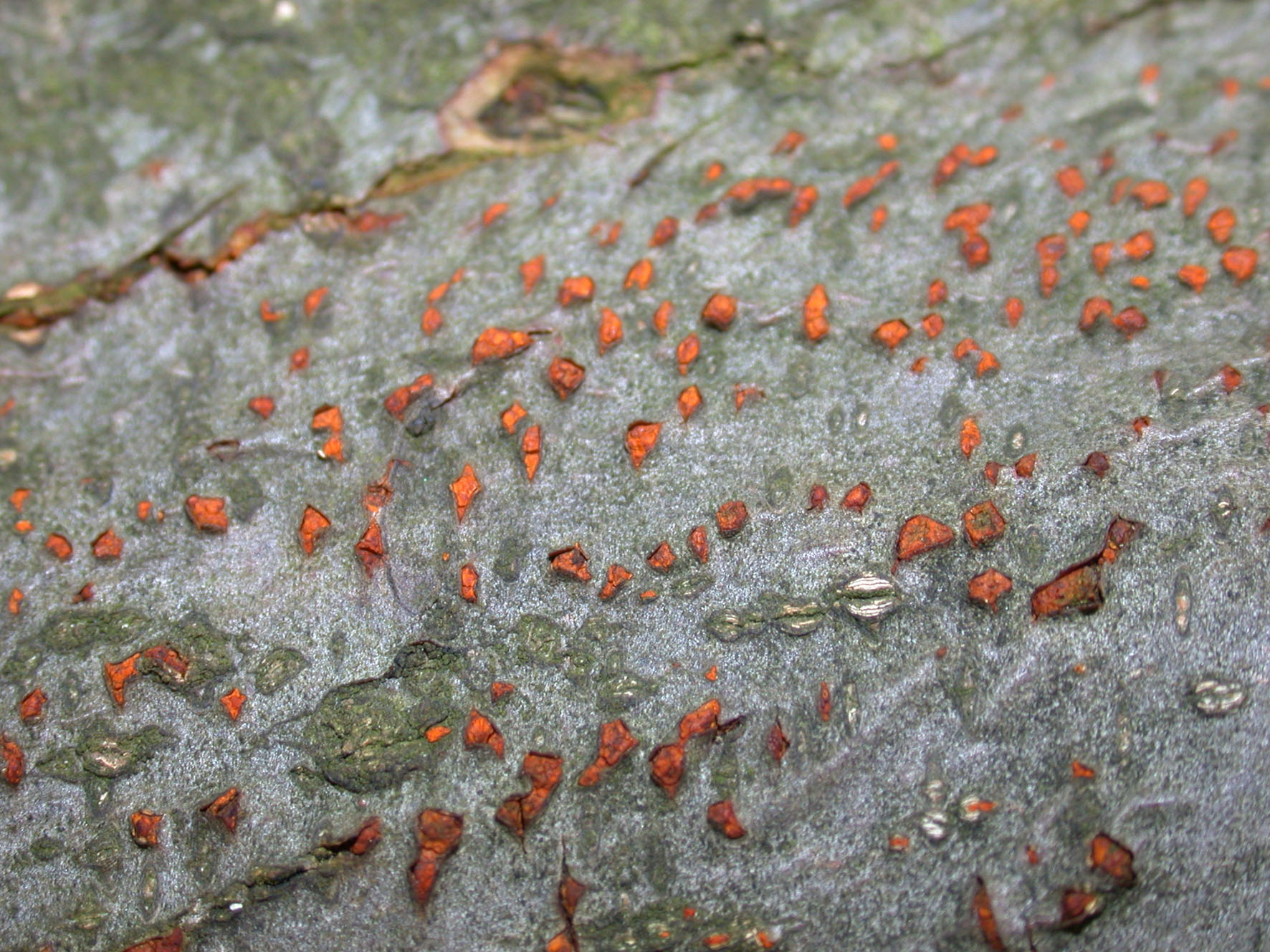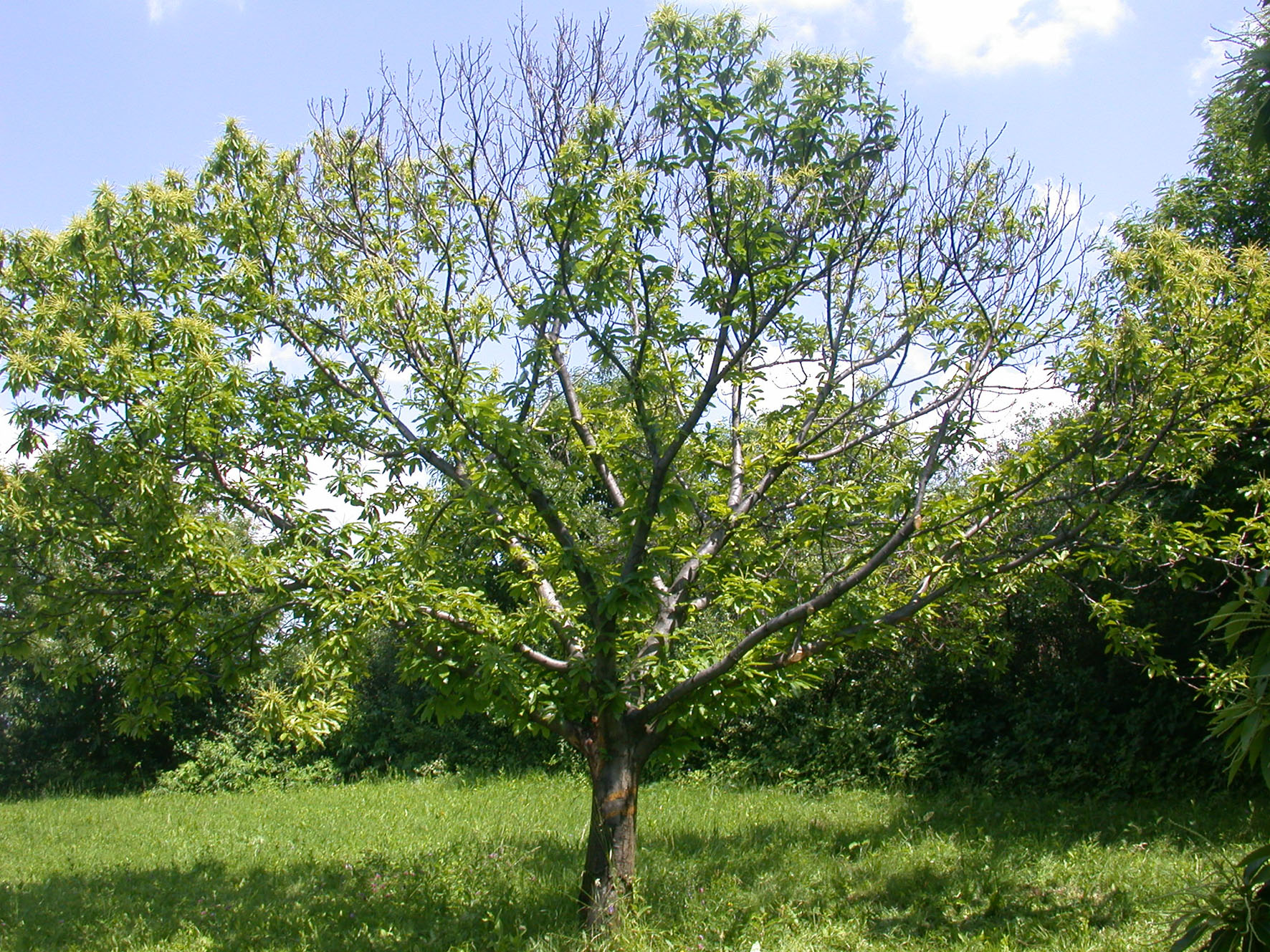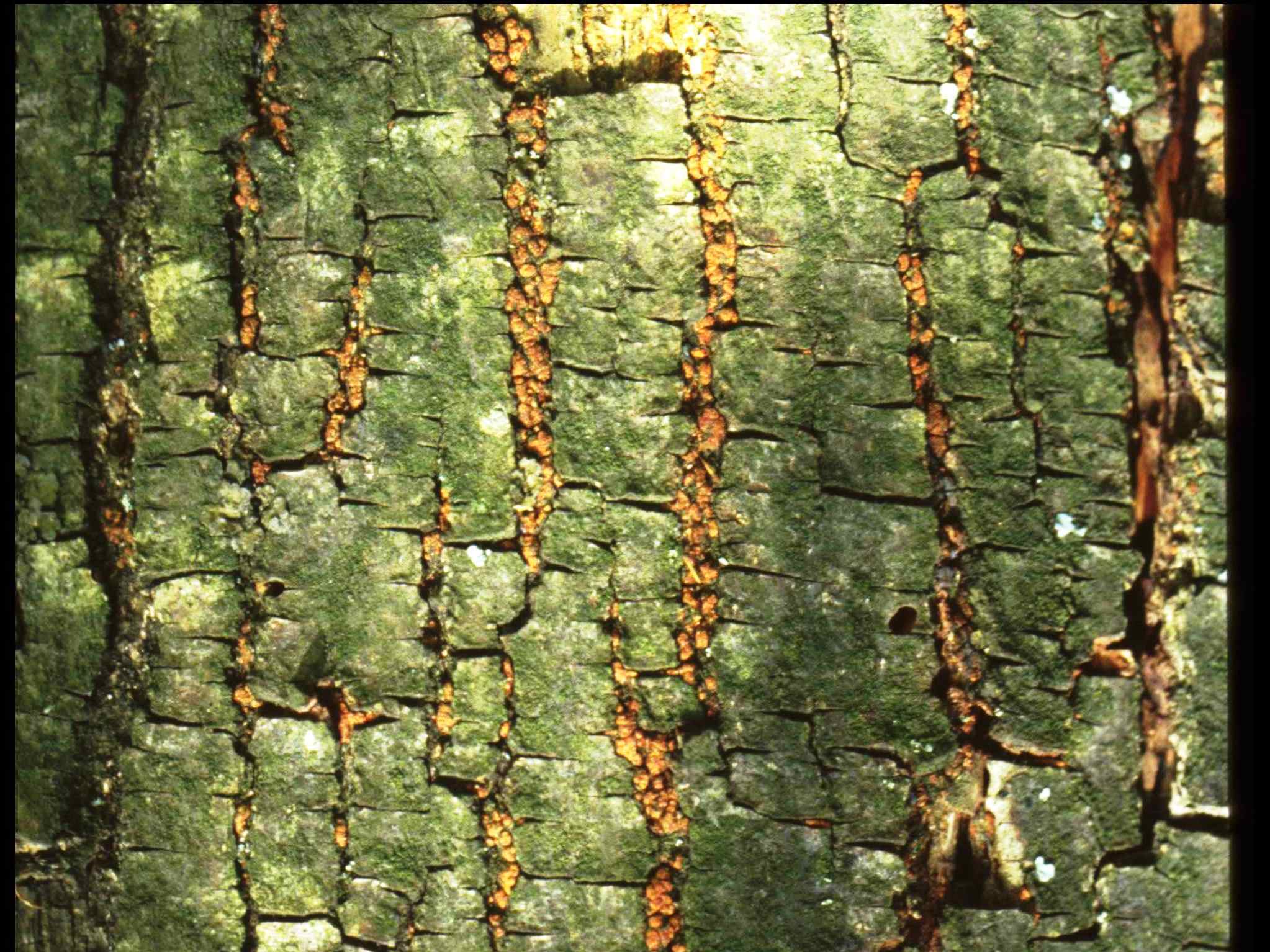Tools and Resources
We use some essential cookies to make this website work.
We’d like to set additional cookies to understand how you use forestresearch.gov.uk, remember your settings and improve our services.
We also use cookies set by other sites to help us deliver content from their services.
Below are pictures of aspects and symptoms of sweet chestnut blight, caused by the fungus Cryphonectria parasitica.

A close-up view of the fruiting bodies of Cryphonectria parasitica (above). Picture: T. Kirisits

A European sweet chestnut tree (Castanea sativa) with dieback caused by sweet chestnut blight. Picture: T. Kirisits

A canker on a sweet chestnut tree caused by a hypovirulent strain of Cryphonectria parasitica. See ‘Long-term prospects’ on the sweet chestnut blight main information page for more information about hypovirulence. Picture: T. Kirisits

A canker caused by sweet chestnut blight. Picture: T. Kirisits

A C. parasitica lesion on a cut branch of sweet chestnut. Picture: D. Rigling

C. parasitica sporulation in sweet chestnut bark cracks and fissures. Picture: D. Rigling

A young C. parasitica lesion. Picture: D. Rigling
Back to sweet chestnut blight main tools and resources page
Cookies are files saved on your phone, tablet or computer when you visit a website.
We use cookies to store information about how you use the dwi.gov.uk website, such as the pages you visit.
Find out more about cookies on forestresearch.gov.uk
We use 3 types of cookie. You can choose which cookies you're happy for us to use.
These essential cookies do things like remember your progress through a form. They always need to be on.
We use Google Analytics to measure how you use the website so we can improve it based on user needs. Google Analytics sets cookies that store anonymised information about: how you got to the site the pages you visit on forestresearch.gov.uk and how long you spend on each page what you click on while you're visiting the site
Some forestresearch.gov.uk pages may contain content from other sites, like YouTube or Flickr, which may set their own cookies. These sites are sometimes called ‘third party’ services. This tells us how many people are seeing the content and whether it’s useful.